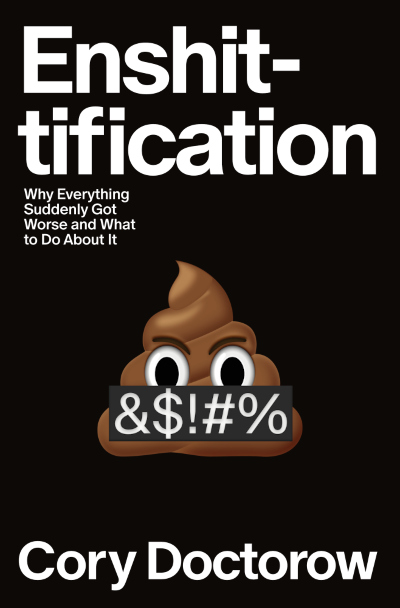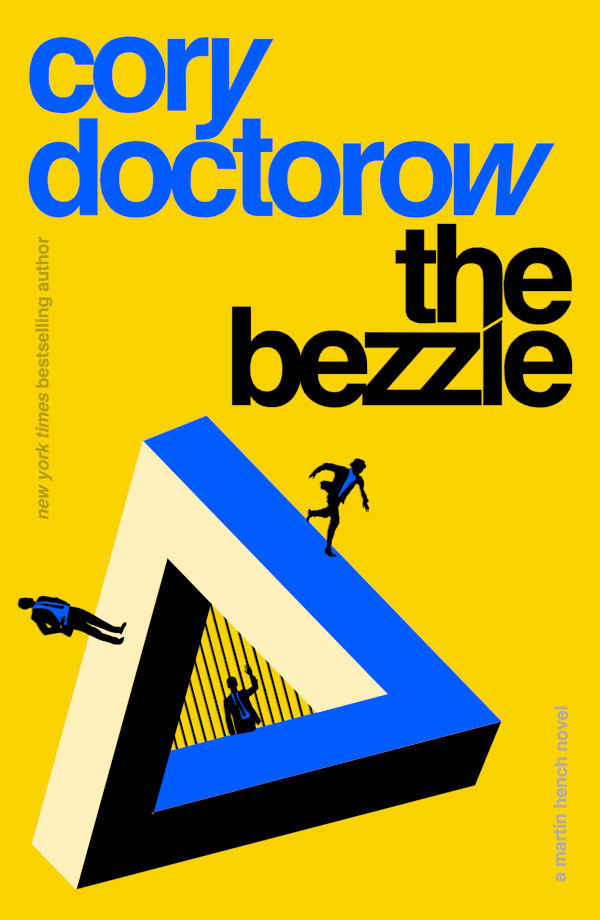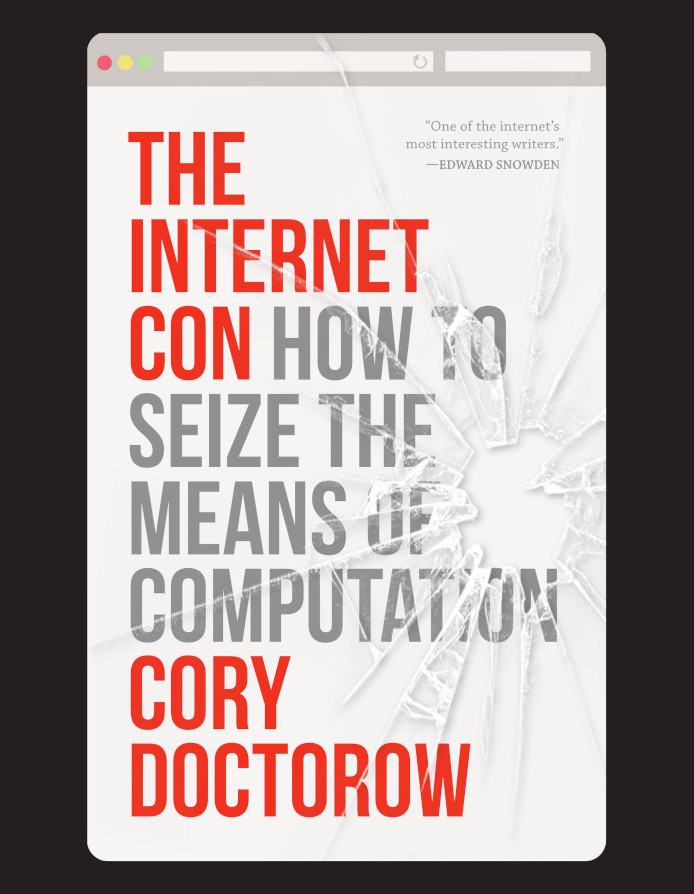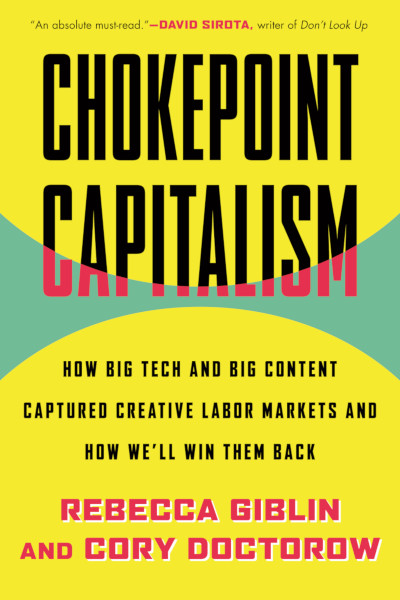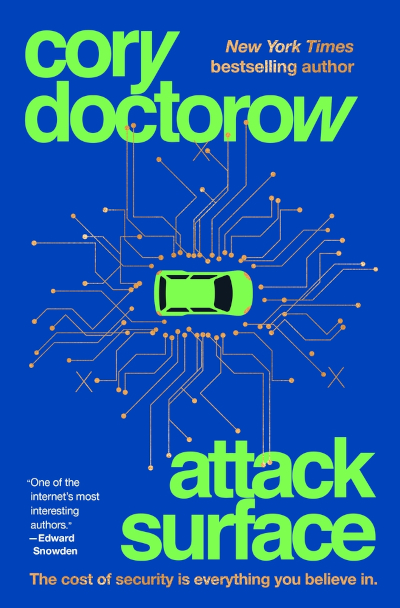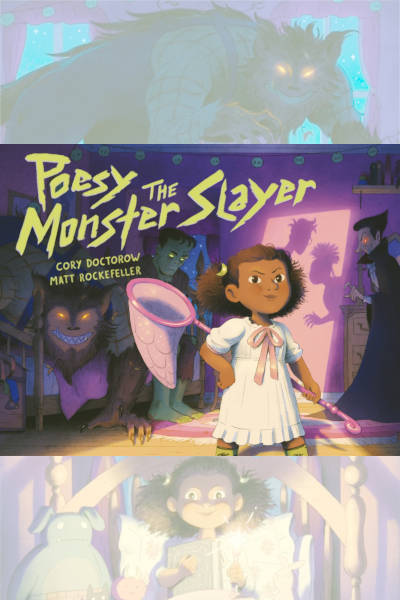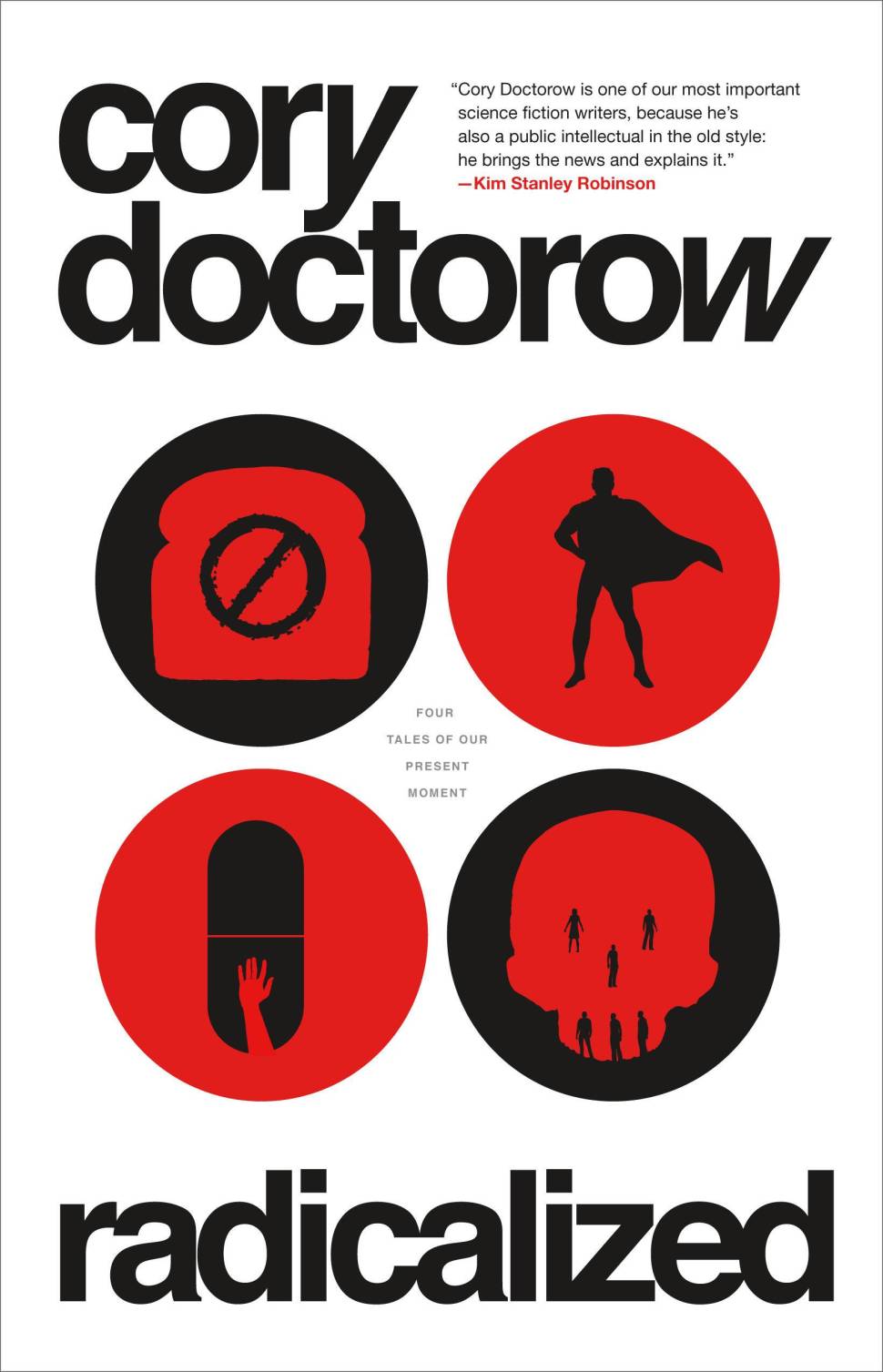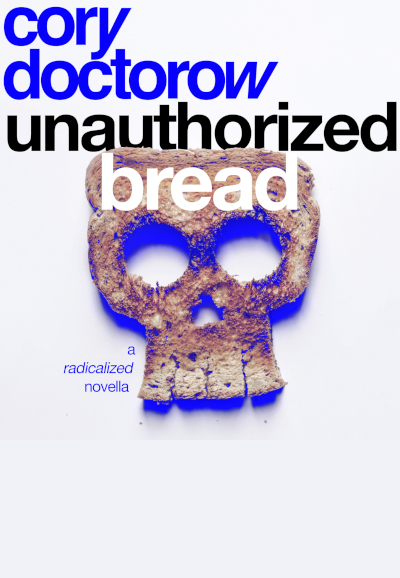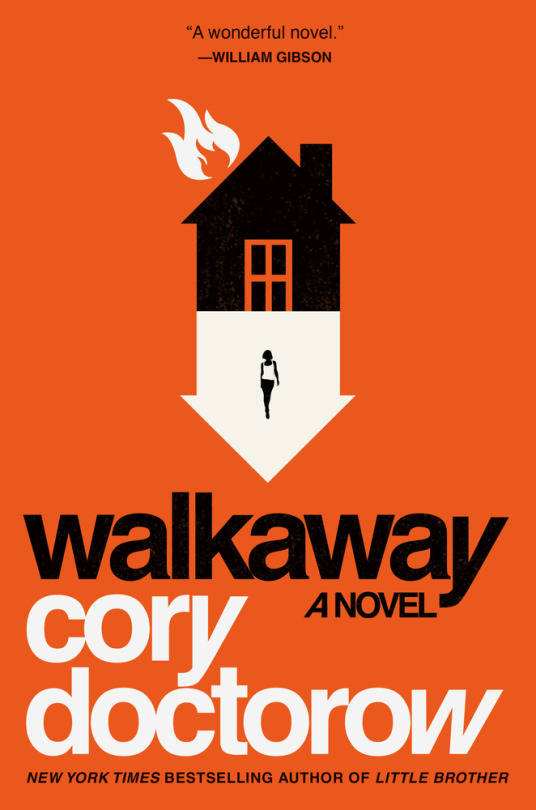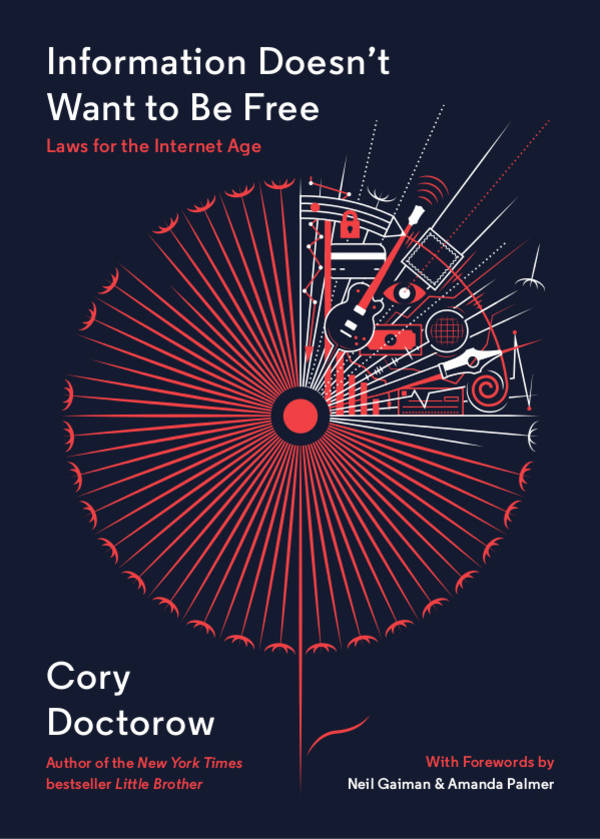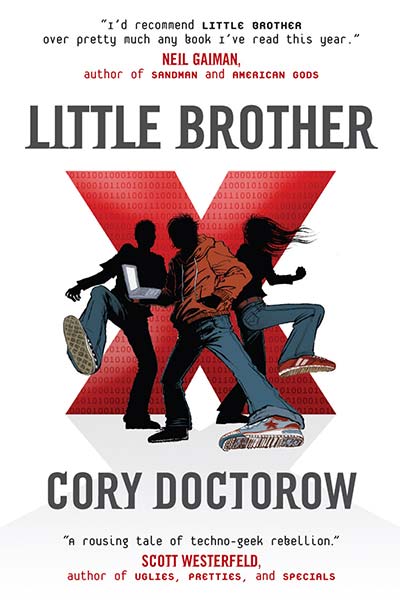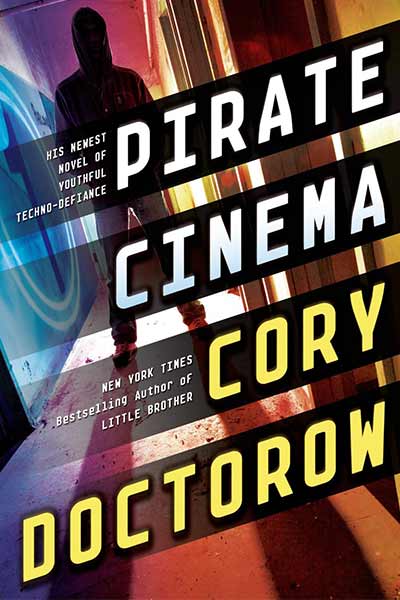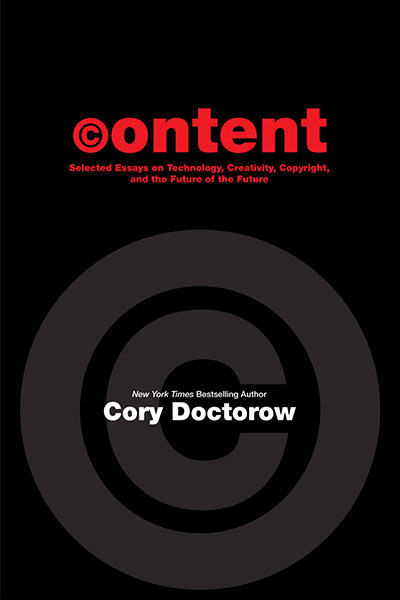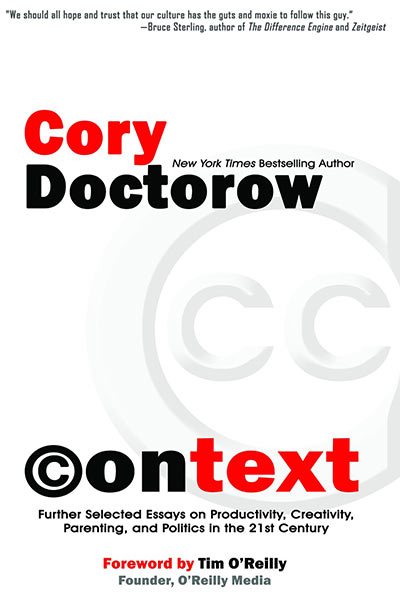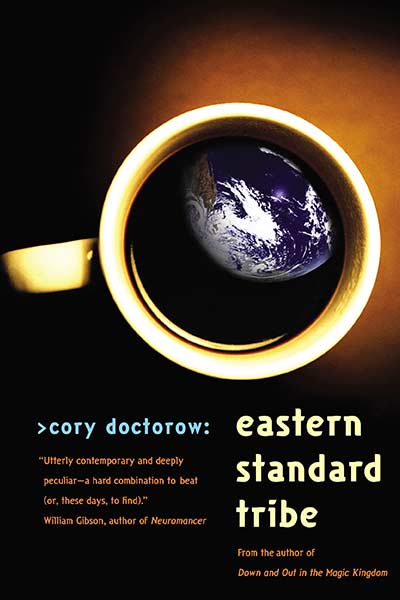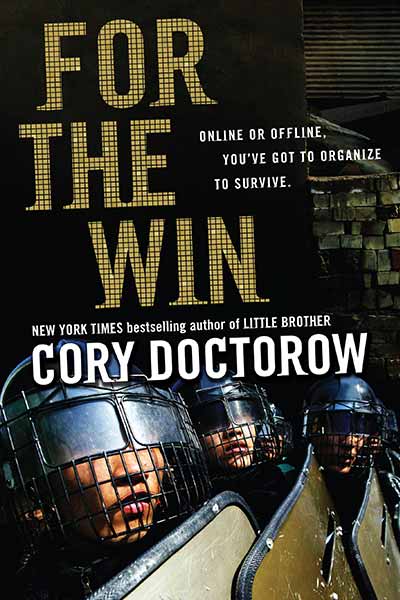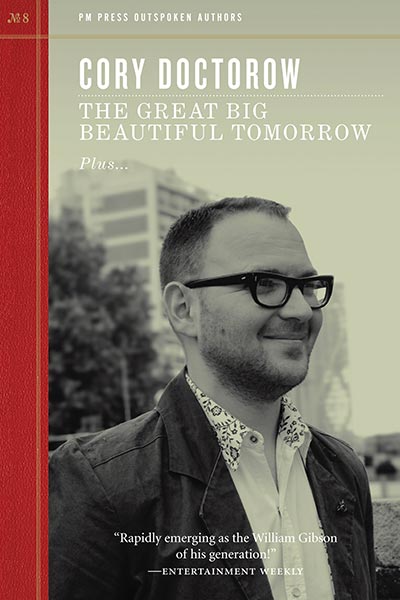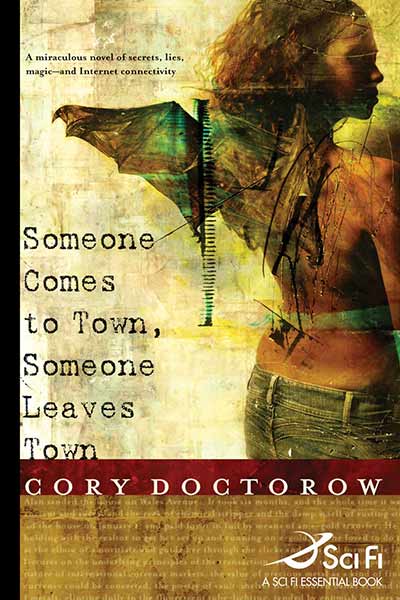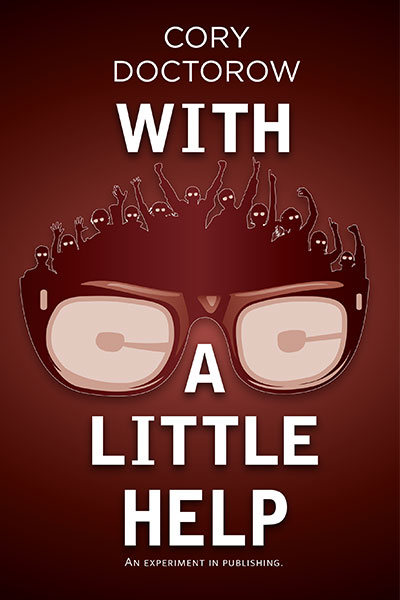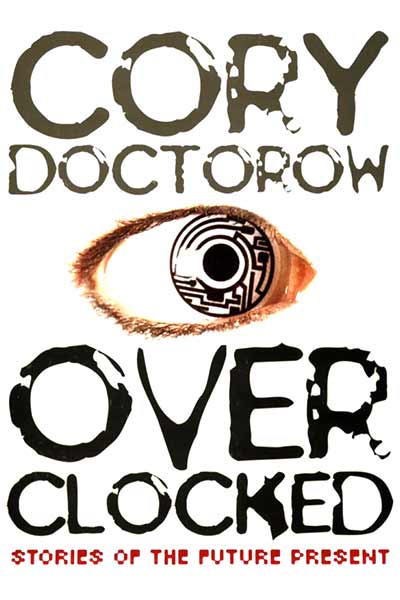My latest Guardian column “Surveillance: You can know too much,” explains how collecting too much information on innocent people makes it harder to catch guilty ones:
At a certain point, data gathered to predict the weather overwhelms your capacity to add it to your calculations efficiently, resulting in ever-longer runtimes that give less accurate predictions. It’s better to crunch the data needed to calculate tomorrow’s weather in 10 minutes (and refine your guess twice an hour) than to shovel so much data into the hopper that you don’t get tomorrow’s forecast until next week.
The sweet spot lies somewhere between gathering too much information and gathering too little – and the secret to hitting that spot is intelligent, discriminating data-acquisition.
Take London: cover every square inch of the city with CCTVs and you’ll get so much information that you’ll never make any sense of it. Scotland Yard says that CCTVs help solve fewer than 3% of all crimes, while a study in San Francisco found that at best, criminals simply move out of camera range, while at worst they assume no one is watching.
Similarly, if you take fingerprints from every person who applies for a visa – or worse still, from every person in Britain who has to carry one of the proposed new biometric cards – you will fill the databases with chaff that slows down searches, generates endless false matches, and threatens everyone in the database with the worst kind of identity theft.

The flood of positive reviews for Little Brother has been nothing short of amazing, but two very special ones came in today. One is from John E. Cook’s son Ean, left on their kitchen whiteboard last night after Ean finished the book (pictured here), the other from my friend and colleague William Gibson: “I’ve not previously expressed my admiration for Cory Doctorow’s Little Brother. As Wm. Burroughs was fond of saying, “young boys need it special”. In the case of Cory’s book, though, young girls need it special too.”
At the end of my book-tour last month, I stopped at the Google NYC office and did a reading from the book and spoke about general subjects related to it.
Link

Book-binder Abi Sutherland took one of the misprints from Pablo Defendini’s limited edition prints of his concept art for a paperback edition of my young adult novel Little Brother and custom-bound a hardcover of the book with it. I am consumed with lust for this one-of-a-kind edition. I hope Abi will let me see it in person some day!
Oh, and while I’m on the subject: the book’s just gone into its fifth week on the NYT bestseller list, and it’s still on the Indie list (formerly the Book Sense list) and as of this week, it’s also on Publishers Weekly’s bestseller list! Ho-ah!
Update: Abi sez,
Slight corrections: it’s a blank book rather than a copy of Little Brother, mostly due to printer constraints. Printing out a whole book double-sided on my printer would be soul-destroying, and I don’t have signature-sewn editions to tear down.
The binding is a “sewn boards” binding, about halfway between hardcover and softcover. The paper that Pablo used for the prints has such a nice feel and weight; I wanted to work with its sensual qualities.
And I confess that it’s not one of a kind. I plan to make five or six of this set, one of which will be heading your way in the very near future. I was going to surprise you with it, but that requires secrecy. I got too excited about how the book came out and had to show it off: secrecy fail.
Last week, I conducted a long phone interview with The Onion’s Tasha Robinson, who’s reviewed a lot of my work for The Onion in years gone by. We had a great conversation and to my delight, Tasha’s put up the whole transcript of the chat, which covered a lot of ground.
I think that young kids have rarely been people who have disposable income and spend it well. As a writer, I had the good fortune to work in a bookstore that sold new and used books, so I got a real cradle-to-grave view on what happens to creative work, and how audiences mature. So you’d see people coming in who are very young, who had a little pocket money, and would just buy used books. And sometimes they would say, “If someone brings in this new book as a used book, please give me a call. I’d like to be the first person in line to buy it.” And we would actually have someone on staff whose job it was to take the used books that came in, and look them up in the computer to see if anyone was waiting for them, and if they were, to call them up and tell them there was a copy for $2 waiting. As those people cultivated the habit of reading, and more money became available to them, they would spend more freely in the store. Really, what changed wasn’t their willingness to pay, it was their ability to pay, and maybe in our own minds, we conflate those two. In general, when you reach a certain point in your life cycle as a buyer, the cost of a book is not something you generally notice.
It’s kind of like the buyer who walks into a store and is thinking about buying a candy bar, and one of them is priced at $.99 and the other is priced at $1.10. For a little kid, that might make a difference. For adults on their way out of the store with $75 worth of groceries, it makes no difference at all. They’ll pick the candy bar they want, not the one that’s $.11 cheaper. So there’s a certain price sensitivity that evaporates when you get older. And then when you get older still, when you become someone on a fixed income, it reappears. And you see that whole lifecycle of people when you work in a used bookstore, and I kind of feel like what I want to be sure of is not that every time someone reads my book, I get paid for it. I’m more interested in making sure that every time someone decides to make what I call a macro payment, to spend a bunch of money on an entertainment decision, that I’m really close to the top of their wish list of what they want to spend it on. And I think you see this with things like the Nine Inch Nails release, or the Radiohead release, where really, what they were trying to do is say to the people who are cash-poor and time-rich, “Just take this and go around and promote the hell out of it. Go and act as breezes to loft my seeds to every corner of the globe.” Because if you do that widely enough, if you cast those seeds widely enough, some of them will germinate in really fertile soil, some of them will land in the pocket of a guy who’s got a ton of disposable income, who’s sort of 18-34, single, working his first job, his first major professional job at a college, with lots of money jingling in his pocket, who might think, “Holy crap! $300 limited-edition Nine Inch Nails box set, yeah, I’ll take one of those!”
I’m way more interested in, instead of trying to turn the 15-year-old upside down and shake an extra couple of quarters out of his pockets, in how I can use his natural loquaciousness, his natural enthusiasm, to help get the message out about really high-ticket items, like a $20 hardcover, into the ears of people who routinely buy $20 hardcovers without even blinking.

IDW adapted six of my short stories for comic book, publishing them as singles in 2007. In 2008, they published the full collection in a single set of covers, and I released them as a Creative Commons download under the Attribution-ShareAlike-Noncommercial license. Collected in this volume are adaptations of my award-winning stories “Craphound,” “Anda’s Game,” “When Sysadmins Ruled the Earth,” “After the Siege,” “I, Robot” and “Nimby and the D-Hoppers.”
“Futuristic Tales of the Here and Now” on Amazon
Futuristic Tales of the Here and Now on Barnes and Noble
Futuristic Tales of the Here and Now on Books-A-Million

IDW have just published the collected issues of “Cory Doctorow’s Futuristic Tales of the Here and Now,” a six-edition series of comics adapted from my short stories by an incredibly talented crew of writers, artists, inkers and letterers (and I do mean incredible: Dara Naraghi, Esteve Polls, Sam Keith, Robert Studio, J.C. Vaughn, Daniel Warner, Scott Morse, Paul McCaffrey, Paul Pope, Dan Taylor, Dustin Evans, Ben Templesmith, Erich Owens, Ashley Wood, James Anthony Kuhoric, Guiu Vilanova, German Torres, Danny Parsons, Robbie Robbins, Neil Uyetake, Chris Mowry, and Amauri Osorio).
As with all of my books, this one is released under a Creative Commons Attribution-ShareAlike-NonCommercial license, meaning you can copy it, share it, remix it and play with it, provided it’s on a non-commercial basis. I’ve uploaded the full book in high resolution as a PDF and CBR file to the Internet Archive, for your downloading pleasure.
Collected in this volume are adaptations of my award-winning stories “Craphound,” “Anda’s Game,” “When Sysadmins Ruled the Earth,” “After the Siege,” “I, Robot” and “Nimby and the D-Hoppers.”
Have at it!
Link to “Futuristic Tales of the Here and Now” on Amazon
Link to free downloads of “Futuristic Tales of the Here and Now”
Reminder: I’ll be the guest of honour at the Swedish national science fiction convention, SweCon, in Linköping, Sweden, next weekend! Hope to see you there:
Swecon 2008 – ConFuse 2008
The Swedish National
Science Fiction and Fantasy Convention 2008
Guest of Honour
Cory DoctorowDate: 13-15 June 2008
Venue: Ryds Herrgård, Linköping, Sweden

Flickr user Oschene created this papercraft compass rose jar on which is printed the entire text of my novel Little Brother, encoded as “1.7 gazillion microdots”: “One has only to unfold the model, scan it and reconstitute it into a readable text.”
